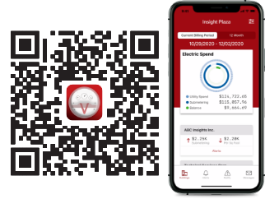Unit Conversions: How to Compare Your Meter Data to Your Utility Provider's
Utilities like gas and water are often measured in one unit but billed in another. Here are the conversion factors you need to verify your billing data.
Unit Conversions: Water You Talking About?
Ever opened up your monthly utility package and wondered why your water consumption is measured in gallons but billed in cubic feet? What's going on?
Welcome to the wonderful world of unit conversion, where units of measurement flip in an instant. If you hate math, converting units may not be your thing. But once you get the hang of it, many find the process of changing units such as gallons to cubic feet anything but dry.
Different Units – Same Usage
The most important thing to note is that by converting gallons to cubic feet, nothing has really been changed. Just as miles and kilometers are both units of distance – just different ways of measuring that distance – gallons and cubic feet are both measures of volume. The only difference is the increment used to count them.
In other words, depending on how quickly you get to 1 in whatever unit you’re using to measure, your number will differ. But, of course, the amount you’re measuring has not changed. You can describe the width of a table as 36 inches or 3 feet (or 0.91 meters), but the table itself doesn’t change.
The same idea applies to when your water reading is converted from gallons to cubic feet. It turns out that 1 cubic foot of water is the same as 7.48 gallons. So to convert a meter reading in gallons to cubic feet, you just divide the reading by 7.48 (or – more likely – by 748 to convert from gallons to hundreds of cubic feet, or HCF [sometimes written as CCF]).
Units Aren't Universal
Why do we convert your perfectly good gallons to cubic feet? Because that’s how your utility company bills you and what your rates are set for. We use whatever your utility uses to calculate your costs and billing packages. That way, you can compare apples to apples during your accounting review.
Why do most utilities measure in cubic feet (or more frequently, hundreds of cubic feet)? We don’t really know. Sometime in the past, cubic feet became the industry standard, and so it remains. Similarly, the metric parts of the world measure water in cubic meters (rather than in liters). So the idea of cubic length as the base unit for large amounts of liquid is pretty universal at this point.
Converting from gallons to cubic feet is the most common conversion we do, but not the only one. Check out the table below to see what other kinds of unit conversions you might run into on your utility bills.

We love to nerd out about this stuff. If you ever have a question about how we determined a number on your account, don’t hesitate!
About utiliVisor
Your tenant submetering and energy plant optimization services are an essential part of your operation. You deserve personalized energy insights from a team that knows buildings from the inside out, applies IoT technology and is energized by providing you with accurate data and energy optimization insights. When you need experience, expertise, and service, you need utiliVisor on your side, delivering consistent energy and cost-saving strategies to you. What more can our 45+ years of experience and historical data do for you? Call utiliVisor at 212-260-4800 or visit utilivisor.com

